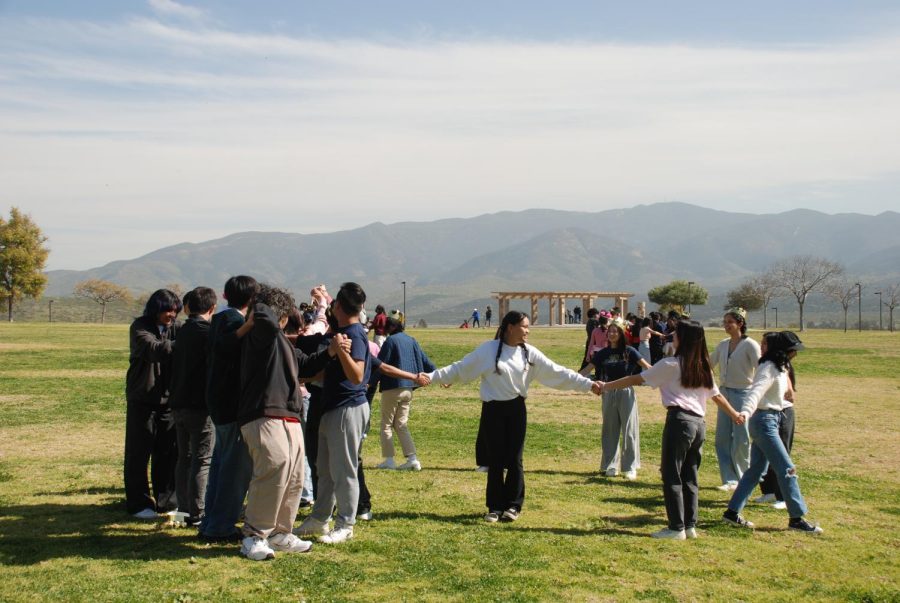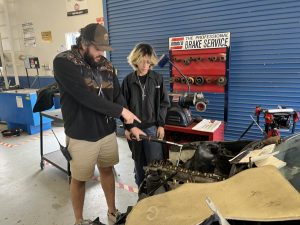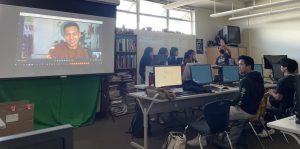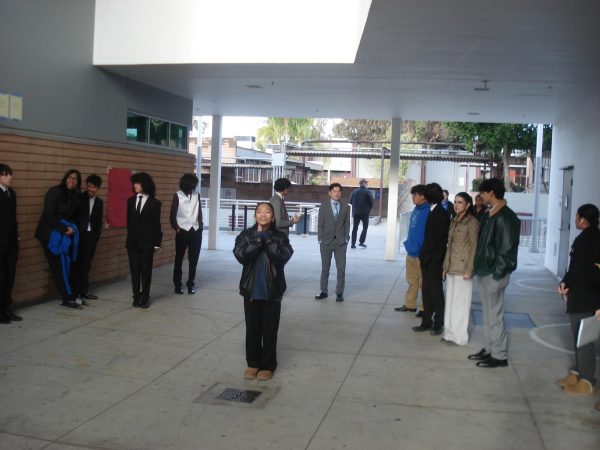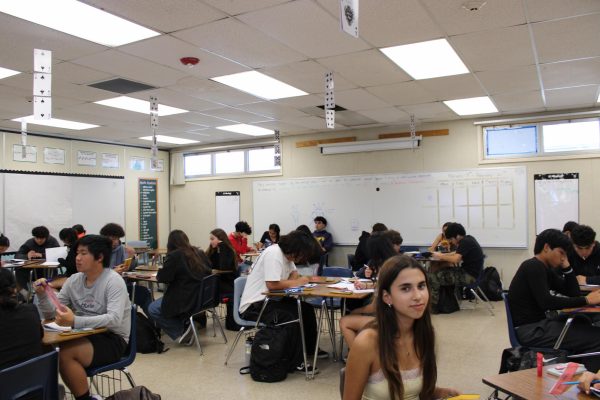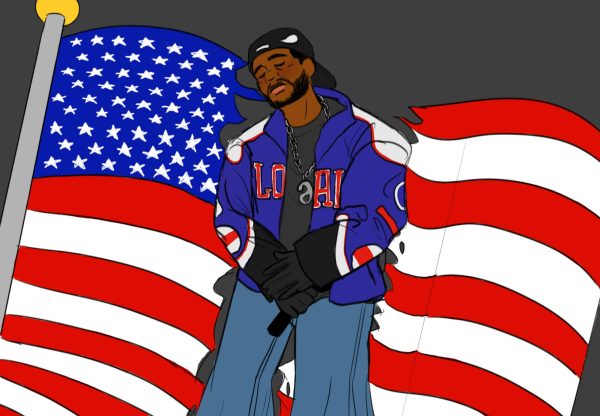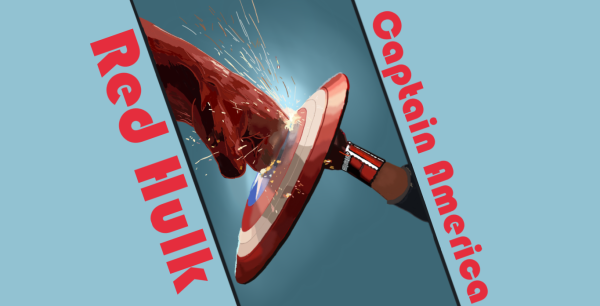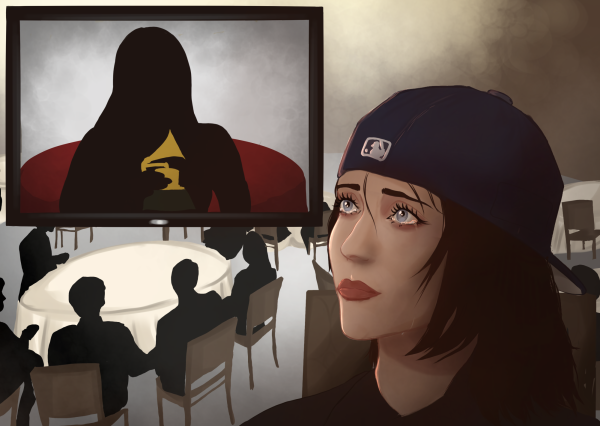Let the friendship games begin
BVH Samahan club participates in PAYO Friendship Games
As the sun beamed down on Mountain Hawk Park, students were gathered in a circle trying to untangle themselves in a human knot, playing a traditional Filipino game.
On Saturday, Feb. 18, the Bonita Vista High (BVH) Samahan club attended the first annual Friendship Games, hosted by the Eastlake High (ELH) Philippine American Youth Organization (PAYO). Filipino organizations from Chula Vista High (CVH), Otay Ranch High (ORH), Olympian High (OLH), Morse High (MH) and San Ysidro High (SYH) were also in attendance. Attendees brought food for a potluck, played traditional Filipino games, participated in a basketball tournament and a volleyball competition.
“It’s a time for all the schools to come together, meet new people [and] have fun. That’s what I plan to do with all the schools,” ELH PAYO Chairperson and senior Erin Del Mundo said.
The event was inspired by the Friendship Games put together by the Filipino organizations at California State Universities. Del Mundo explains that this event is similar to the college level Friendship Games which feature performances, food, vendors and Filipino games—mainly focusing on community building.
“I did not expect this many people, so I’m very grateful that a lot of people came and new friendships are being made,” Del Mundo said. “We get to know each other more outside of our own school.”
PAYO founder and mentor Juanito Amor–who was a part of the San Diego State University Filipino-American club–helped the club reserve the space for the Friendship Games. He communicated with the Chula Vista Parks and Recreation department for permission to hold the event.
“We’re there to say ‘We’re here to provide mentorship. Let’s legitimize it and you guys have fun’,” Amor said.
One of the traditional Filipino games played at the event was “luksong baka”, meaning “jump over the cow”. Participants jumped over a person who progressively got taller each round. The “baka” or cow would start laying down, then after all participants have jumped over them once, the cow would sit up so participants needed to jump higher.
“The games that you saw there are the Filipino games and the music that they’re playing is Original Pilipino Music. That’s awesome because it’s bringing back what we have from the Philippines,” Amor said.
The food served was also traditional Filipino dishes such as pancit, a stir-fried noodle dish made with a variety of ingredients. While Del Mundo worried that there would not be enough food, BVH Samahan Club Co-Presidents and seniors Jenna Broas and Audrey Fernandez enjoyed the food the most, along with community bonding.
“[I enjoyed] eating and seeing the spirit of all the schools having so much fun together,” Broas said.
To distinguish the different schools in attendance, each club wore a different color to the event. BVH wore navy blue or baron gear and gold crowns, EHS students wore pink and pom-pom headbands, OHS wore red, MHS wore black, CHS wore white, ORH wore yellow and SYH wore gray. While the schools were separated by color, Fernandez explained that this event was a unique social experience.
“[I was] nervous. I’m not good at talking to people out of nowhere, but I’ve been having a lot of fun. [This has] helped me get out there and meet new people,” Fernandez said.
The overall goal of Del Mundo in organizing this event was to bring Filipino-American students together. Though she was concerned about attendees being afraid to socialize, she made great efforts in helping everyone feel welcome.
“I’m trying to talk to everyone individually, asking if they need anything. If they’re not comfortable with playing, [I tell them] you can just always sit down, we’re not forcing you to do anything,” Del Mundo said.
As a first generation Filipino immigrant, Del Mundo is very passionate about social events such as these. She explains that she wants to make sure Filipino American students are connected to their culture, even if they are second generation Filipino-Americans.
“Most of our population of PAYO is second generation. That’s why I’m branching this out. We’re going to have games that involve the language and history,” Del Mundo said. “That’s the whole description of PAYO, to make sure that every Filipino–no matter what generation you’re from–is involved.”
Del Mundo’s efforts have helped carry on Amor’s purpose in founding PAYO. As a student at San Diego State University, he saw the connections being made between Filipino-American clubs at the college level and wanted to bring that same opportunity to high school students.
“In the beginning, the idea was written on a napkin, in a restaurant called Conching’s in National City. I said this is what I want to give back to the community,” Amor said. “Now 20 years later it’s still active. It’s amazing.”
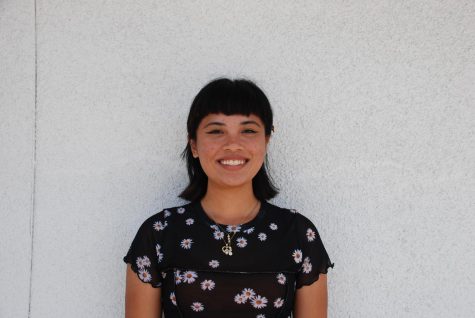
I am a senior at Bonita Vista High and this is my second year as a staff member of the Crusader. Last year, I had a blast being News Editor and I am excited...
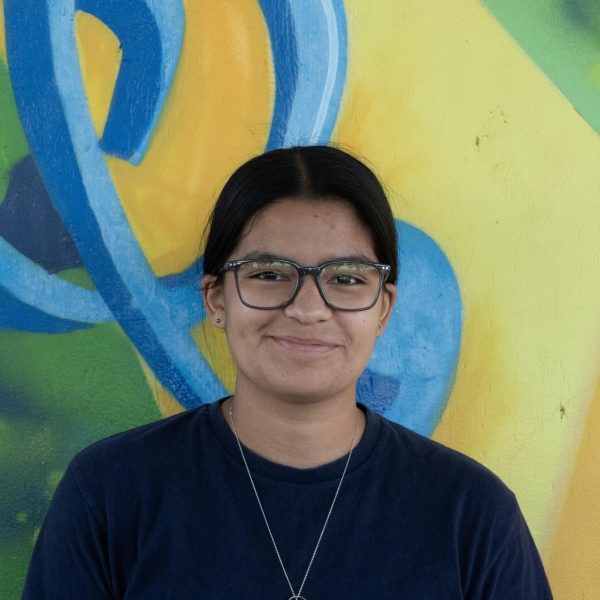
Hello! I am a senior at BVH, and I have been on the Crusader staff for all four years now. This year I am Co Editor-in-Chief and was previously the Editor-at-Large,...

